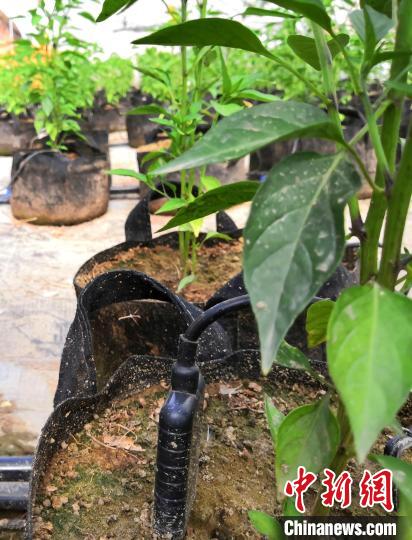Peppers are growing healthily in pots containing a mixture of sand and organic fertilizer in greenhouses of a regiment of the Xinjiang Production and Construction Corps in Tumxuk, northwest China’s Xinjiang Uygur Autonomous Region, a new approach that is helping to increase local growers’ incomes.

Photo shows a computer that can run the entire vegetable growing process in a greenhouse of a regiment of the Xinjiang Production and Construction Corps in Tumxuk, northwest China’s Xinjiang Uygur Autonomous Region. (Photo/Shi Yujiang)
This achievement was made thanks to technologies and assistance provided by a team from Shihezi University in the region’s Shihezi city.
The team assisted the regiment in setting up two greenhouses, each equipped with watering and fertilizing facilities, and connected with a computer and sensors in the pots. Water and fertilizer are mixed in set proportions and then delivered to the roots of vegetables through irrigation pipes.
The sensors can detect the amount of water and nutrition the roots need, and then transfer the data to the computer, according to Mi Huilong, a staff member at the university, adding that vegetables that are grown this way taste no different from those planted with the conventional method.

Photo shows a sensor that can detect the amount of water and nutrition the roots of the pepper needs in a pot. (Photo/Shi Yujiang)
“This method makes it easier to manage vegetables, as it saves effort to water, fertilize and weed vegetables, and can reduce plant diseases and insect pests,” Mi said.
Mi explained that they also used this approach to grow other vegetables such as tomatoes and eggplants. This alternative also shortens the production period, improves the quality of vegetables, and reduces costs.
The net income brought by each greenhouse could reach around 30,000 yuan (about $4,643) each year, much higher than the income brought from the conventional method, according to Jin Yike, head of a farmer cooperative in Tumxuk, adding that the greenhouses can serve as a pilot program for increasing local people’s incomes.
“Next year, I’m going to invest in a couple of these greenhouses to grow vegetables, in the hope of earning more money,” said a villager.








